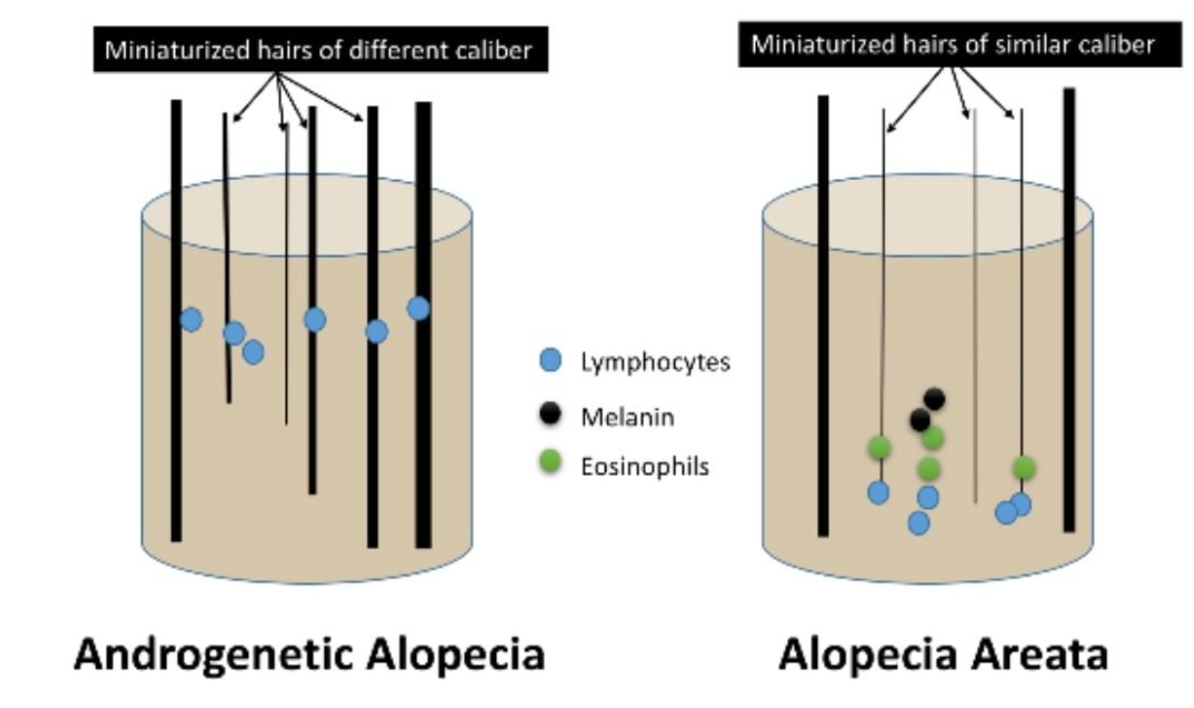Miniaturization in Alopecia Areata vs Androgenetic Alopecia
Miniaturization: Not Only for Androgenetic Alopecia
When most people think about the term “miniaturization”, the hair loss condition known as androgenetic alopecia “AGA” (male balding and female thinning) comes to mind. This common hair loss condition is associated wirh the progressive “miniaturization” of hairs. A biopsy from a patient with AGA or an up close dermatoscopic examination of the scalp shows this variation in the size of follicles. Some follicles are thick and some are thin and some are very thin. The variation in the size of follicles is known as “anisotrichosis” and is very much a part of what AGA is all about.
AGA is not the only hair loss condition that is associated with miniaturization. Alopecia areata for example also shows miniaturization. However, in contrast to AGA, alopecia areata often does not show the same degree of “anisotrichosis” - meaning that there is not the same degree of variation in follicle size as seen in AGA. In alopecia areata, follicles in the biopsy are generally either thick ones or thin without the dramatic variation in caliber that is seen in AGA.
Hair follicle miniaturization can occur in AGA and AA. Hairs are similar caliber in AA when miniaturization is present.
The schematic diagram here shows these key differences. One can see on the left side (of AGA) that miniaturized hairs are all different thickness. In contrast, in the diagram of alopecia areata on the right the miniaturized hairs are all the same size. Lymphocytes are seen in both conditions although in alopecia areata they are classically around the bulb and in fibrous tracts whereas in AGA they are higher up in the skin in the infundibulum and isthmus. Eosinophils and melanin pigment can frequently be seen in fibrous tracts in alopecia areata.
This article was written by Dr. Jeff Donovan, a Canadian and US board certified dermatologist specializing exclusively in hair loss.

